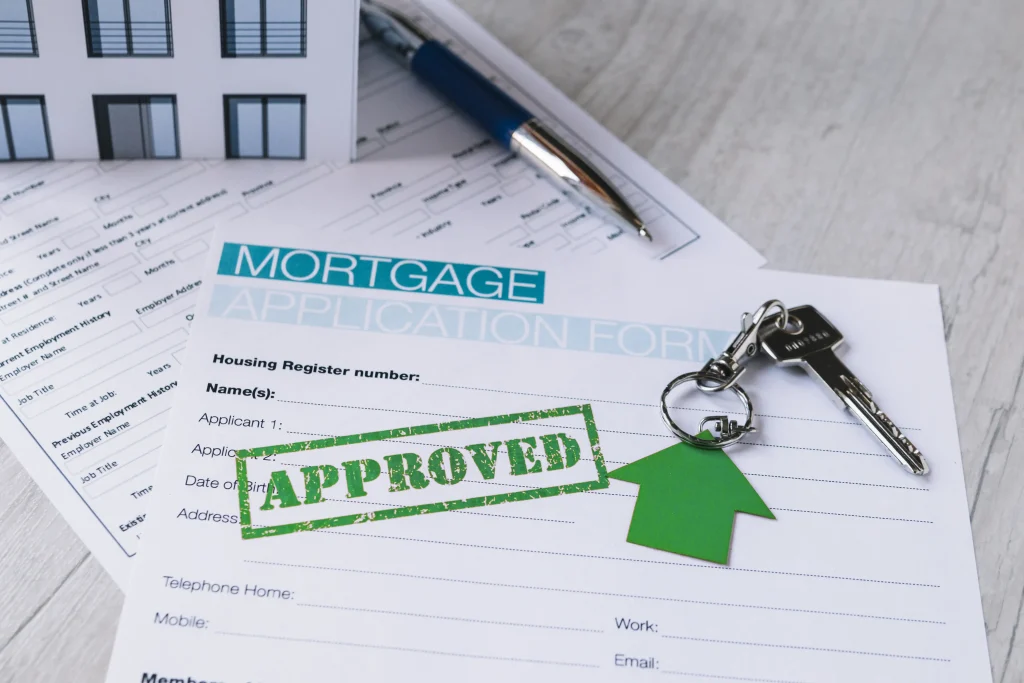Every prospective homeowner knows the journey to owning a home begins with understanding various mortgage options. As a homebuyer, a mortgage is your key to homeownership – a financial arrangement between you and a bank or another lending institution that enables you to make a home purchase. You pledge to pay back the loan within a stipulated period, generally 15 or 30 years. Since a mortgage is one of the biggest financial commitments you’ll make, it’s critical to comprehend the numerous mortgage options available and their inherent advantages and disadvantages.
Comprehensive Guide to Mortgage Options | Home Buying Tips
Types of Mortgages
The first stepping stone in your mortgage journey is understanding the myriad types of mortgages available. The one you choose will depend on your specific financial situation and long-term plans.
1. Fixed-rate Mortgages
In the vast landscape of mortgage options, fixed-rate mortgages serve as the standard, traditional choice. Here, your interest rate, and therefore your monthly payment, stays constant for the entire life of the loan, providing stability and predictability.
Advantages: The main advantage is stability. Your monthly payments remain the same, offering peace of mind and making budgeting easier. This stability allows you to plan your finances without worrying about fluctuating mortgage payments.
Disadvantages: However, a fixed-rate mortgage also means you could miss out on paying lower interest if market rates drop significantly. To benefit from lower rates, you would need to refinance your loan, which could mean incurring additional costs and going through the process of loan approval again.
2. Adjustable-rate Mortgages (ARMs)
Adding a bit of variability into the mix, we have adjustable-rate mortgages (ARMs). These types of loans begin with a lower interest rate compared to fixed-rate mortgages. But there’s a catch; this rate adjusts after a specific period, generally 5 or 10 years, based on market indices.
Advantages: ARMs could potentially result in lower overall payments if market rates decrease over time. This feature makes it an appealing choice for those who plan to sell their home before the fixed-rate period ends.
Disadvantages: However, the uncertainty is a significant risk. If rates increase, your monthly payments could increase considerably, straining your budget. It’s also important to note that adjusting your budget to accommodate higher payments can be a stressful process.
3. Interest-only Mortgages
Interest-only mortgages, a less traditional option, propose a different arrangement. For a certain initial period, typically 5 to 10 years, your monthly payment covers only the loan’s interest. During this period, the principal, the amount you borrowed, remains unchanged.
Advantages: The initial period of lower payments can make this type of loan attractive. If you’re expecting a significant increase in income in the future, this option allows you to manage your current cash flow better.
Disadvantages: Once the interest-only period ends, the monthly payments increase as you begin to pay down the principal. This sudden jump can significantly impact your financial planning. Also, since you’re not reducing the principal during the initial period, you’re not building equity in your home.
4. Balloon Mortgages
Balloon mortgages are somewhat uncommon. They offer lower rates for an initial period, usually 5 to 7 years. However, at the end of this term, the entire loan balance comes due in a single, large payment, known as a “balloon payment.”
Advantages: The primary benefit of a balloon mortgage is the initial period of lower interest rates, which could be advantageous if you plan to sell the home before the term ends or if you anticipate a large influx of money to pay off the balance.
Disadvantages: However, the substantial balloon payment at the end of the term is a significant risk. If you’re unable to pay off or refinance the balance, you could risk foreclosure.

Government-Insured Loans
Government-insured loans offer certain borrower groups an opportunity to purchase homes with advantageous conditions.
5. FHA Loans
FHA loans, insured by the Federal Housing Administration, attract first-time homebuyers due to their less rigorous requirements.
Advantages: FHA loans offer lower down payment options, are more flexible about credit scores, and allow higher debt-to-income ratios than many other loans. For homebuyers with less-than-perfect credit or those who can’t afford a large down payment, FHA loans can be a feasible path to homeownership.
Disadvantages: The downside is that all FHA loans require mortgage insurance premiums, which increases the overall cost of the loan. Additionally, the loan limits for FHA loans are typically lower than conventional loans, potentially limiting your home-buying options.
6. VA Loans
VA loans, backed by the Department of Veterans Affairs, offer benefits to service members, veterans, and their eligible spouses.
Advantages: These loans offer significant benefits, including no down payment requirement, no private mortgage insurance, and competitive interest rates. These features make homeownership significantly more accessible for those who’ve served our country.
Disadvantages: On the flip side, VA loans come with a funding fee that, while it can be financed into the loan or waived in some cases, can increase the cost of the mortgage. Additionally, not all properties qualify for VA loans, limiting your choice of homes.
7. USDA Loans
USDA loans, backed by the United States Department of Agriculture, aim to promote homeownership in rural and suburban areas.
Advantages: USDA loans can offer zero down payment options, along with lower interest rates. For eligible borrowers, this can help make homeownership possible without a lengthy period of saving for a down payment.
Disadvantages: However, these loans do have their limitations. They come with strict income and location eligibility restrictions, which means they are only available to low-to-moderate-income borrowers and in eligible rural and some suburban areas.
8. Jumbo vs. Conforming Loans
Understanding jumbo and conforming loans can help further refine your mortgage choice. Conforming loans are those that meet the loan limit guidelines set by government-sponsored entities like Fannie Mae and Freddie Mac. When your loan exceeds these limits, it is known as a jumbo loan.
Advantages: Jumbo loans allow you to borrow a larger amount of money, which can be beneficial if you’re in the market for a luxury or high-priced property. They also often come with competitive interest rates.
Disadvantages: However, these loans come with more demanding requirements, including a high credit score, low debt-to-income ratio, and a substantial down payment. They may also come with higher interest rates and a more rigorous underwriting process, making it more difficult to qualify.

The process of choosing the right mortgage option is a critical part of your home-buying journey. Each mortgage option presents unique advantages and disadvantages, which can significantly impact your long-term financial health and homeownership experience. Armed with comprehensive knowledge of various mortgage options, you’re prepared to make a decision that aligns best with your financial conditions and homeownership goals.
From fixed-rate to adjustable-rate, from conforming to jumbo, from conventional to government-insured loans, understanding that the mortgage option you select today will play a significant role in your financial commitments for many years is paramount. Taking the first step can feel daunting, but remember, you’re not alone in this journey. Starting a conversation with a lending professional is the best first step you can take. They can provide insights into the nuances of mortgage insurance, guiding you through the complexities of real estate, and helping you align your financial circumstances with your homeownership goals.
Awarded Best Of The West, 8 Years in a Row!
- All Links
- Open Houses
- up to $70,000
- $70,000 to $100,000
- $100,000 to $150,000
- $150,000 to $200,000
- $200,000 to $250,000
- $250,000 to $300,000
- $300,000 to $350,000
- $350,000 to $400,000
- $400,000 to $450,000
- $450,000 to $500,000
- $500,000 & over
- Condos, Townhouses, Twinhomes
- Mobile Homes
- Rural Dickinson
- Surrounding Communities
- Commercial
- Industrial
- Lot/Land listings

